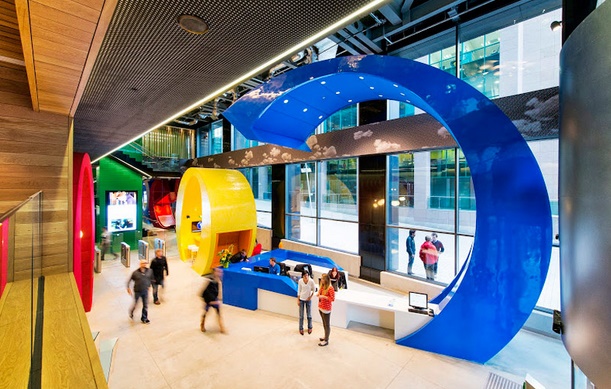It used to be that advertisers had to manually create ads and work with the media (Radio, Television, etc.) to have ads placed. However, in today’s high-tech world, advertising is mainly executed by computer programs and systems.
If you are in advertising, you probably have heard of programmatic media (or ad) buying. This is simply the automated buying of advertising. Over 80% of all digital ad spending (per eMarketer) is done programmatically. Pre-defined computer systems perform the transactions automatically. This includes identifying and purchasing advertising space (media) based on a set of criteria.
Most companies use digital media platforms (DMP) to oversee the parameters that define their target audiences and what specific advertising needs to be directed to them. The digital media platform does many things, but it is the media buying platform to buy advertising. It provides data to the DSP or Demand-Side Platform, where the ad space’s actual acquisition is made.
Media Buying Platforms
Media buying platforms leverage big data and tech infrastructures such as ad networks, ad exchanges, trading desks, demand-side platforms (DSPs), supply-side platforms (SSPs), exchange-based buying of ad inventory, and real-time bidding (RTB) to send targeted and relevant advertising to the viewers across various channels. Algorithms find ad impressions derived from consumer behavioral data. This allows advertisers to precisely define budgets, goals, and attribution and optimize portfolios to maximize their returns.
A media buying company gives advertisers a one-stop shop to acquire advertising space and manage all their transactions with the exchanges (DSP, SSP) and publishers (media sellers). In addition, these companies provide media buying platforms as a service. Many are out there, sGoprog, SmartyAds, MediaMath, PubMatic, Simpli.fi, and TubeMogul.
Advertisers must manage many media types and distribution channels, from CTV to YouTube and OTT. Media buyers also negotiate with publishers for ad inventory, ads budgeting, and ad inventories optimization. This creates a complicated set of activities that make a good media buying platform.
Source: Goprogrammatic
How Things Work
The world of advertising now moves very rapidly and is ever-changing. For example, programmatic advertising (automated selling and buying ads with computers) allows companies to adjust their ad campaigns and rapidly find target audiences.
Agencies often have Trading Desks (ATD) that manage and execute programmatic media buying. They also manage ad content with DMPs (data management platforms). The advertiser utilizes all these tools to feed into their media buying platform to acquire advertising. The buying platform interfaces with a DSP (Demand Side Platform) to complete the automated process of buying advertising inventories.
The publishers of digital media deliver inventories of ad space or impressions to an SSP (Supply Side Platform). Then, the SSP connects with an ad exchange, creating auctions for the ads. The DSPs bid on ads that their clients are looking for. When an auction is won, the DSP interacts with the media publisher to deliver the ad.
Select a Media Buying Platform
Determining which media buying platform is best for you is a daunting task. There are three major areas you need to assess. Costs, how target audiences are created, and the overall capabilities of the platform and services.
The cost is a big factor. Closely examine the provider’s pricing agreements. Some platforms have a periodic fixed fee or charge a fee based on ad spending. Also, assess an initial setup cost. Everything is negotiable.
The next critical factor to examine is how the platform creates target audiences. They can use locations, dayparts, frequency limits, repeat targeting, and many other things. Examine to what extent they can use all of these things and customize them to your specific needs? Make sure they can accommodate all the variables you need to best target your business’s audience(s).
Finally, you need to assess the overall quality of their systems. More specifically, your provider must have extensive and first-rate ad libraries that support many media formats. Data security is paramount, and they need to include functions that prevent ad fraud. Technical support is another crucial quality factor to look at. Ensure they can have processes and staffing in place to resolve issues quickly.
Conclusion
In today’s world of instant on-demand media and digital advertising, companies must have the best possible platform to identify and acquire advertising fast and cheaply. Therefore, programmatic systems are no longer a luxury. Instead, they are required to be competitive.
Companies that buy media (BidMind, Fiksu, SmartyAds, TubeMogul, and others) and systems give agencies the functions and capabilities they must have to effectively manage their campaigns without having to invest capital in the tools, IT, and staffing. This allows companies (ad businesses) to focus on what they do best, and they don’t need to worry about changes in technology or the advertising media environments.
There are a lot of great service providers, but you must select the right one for your organization and strategies.







Leave a Reply